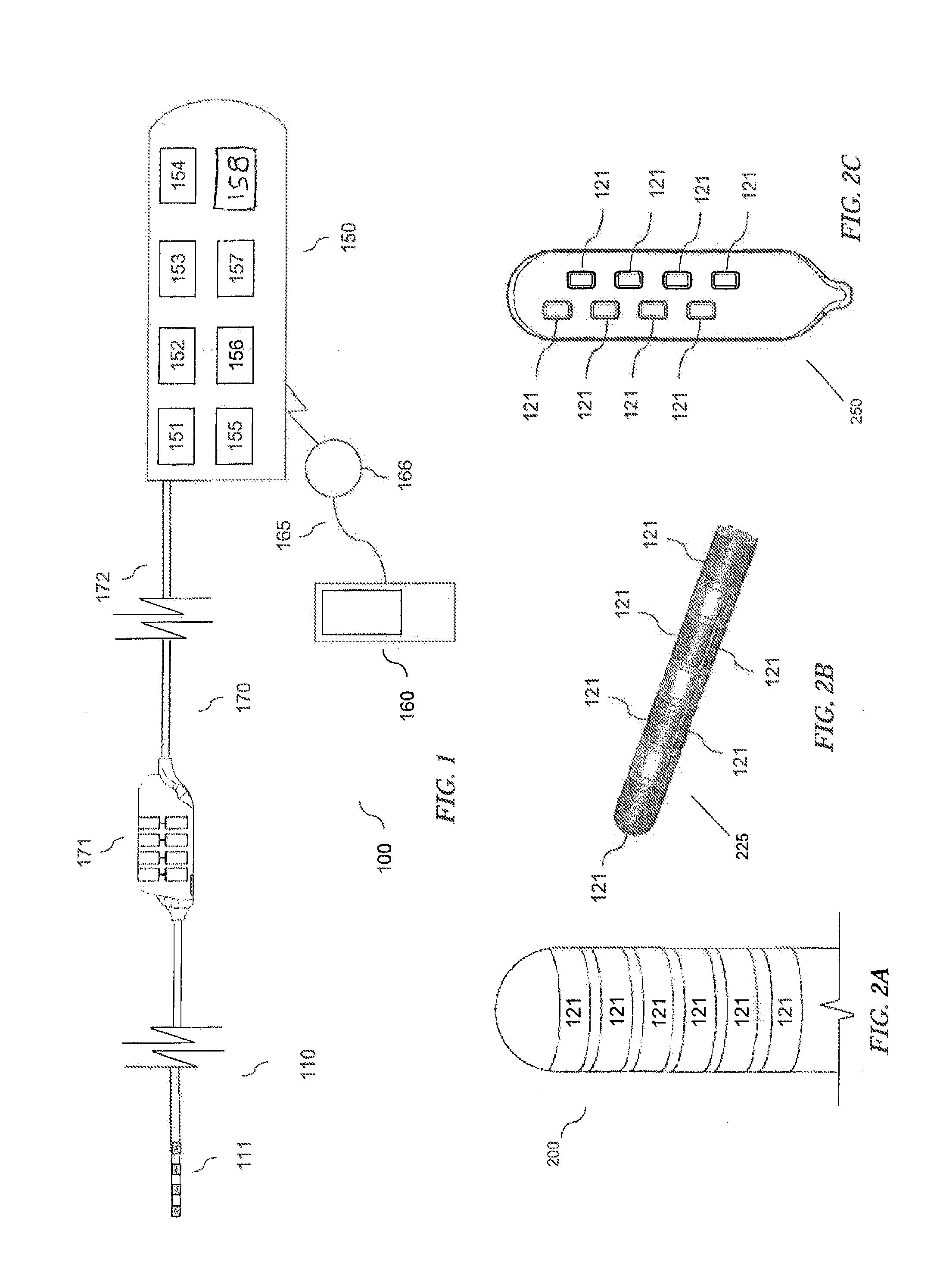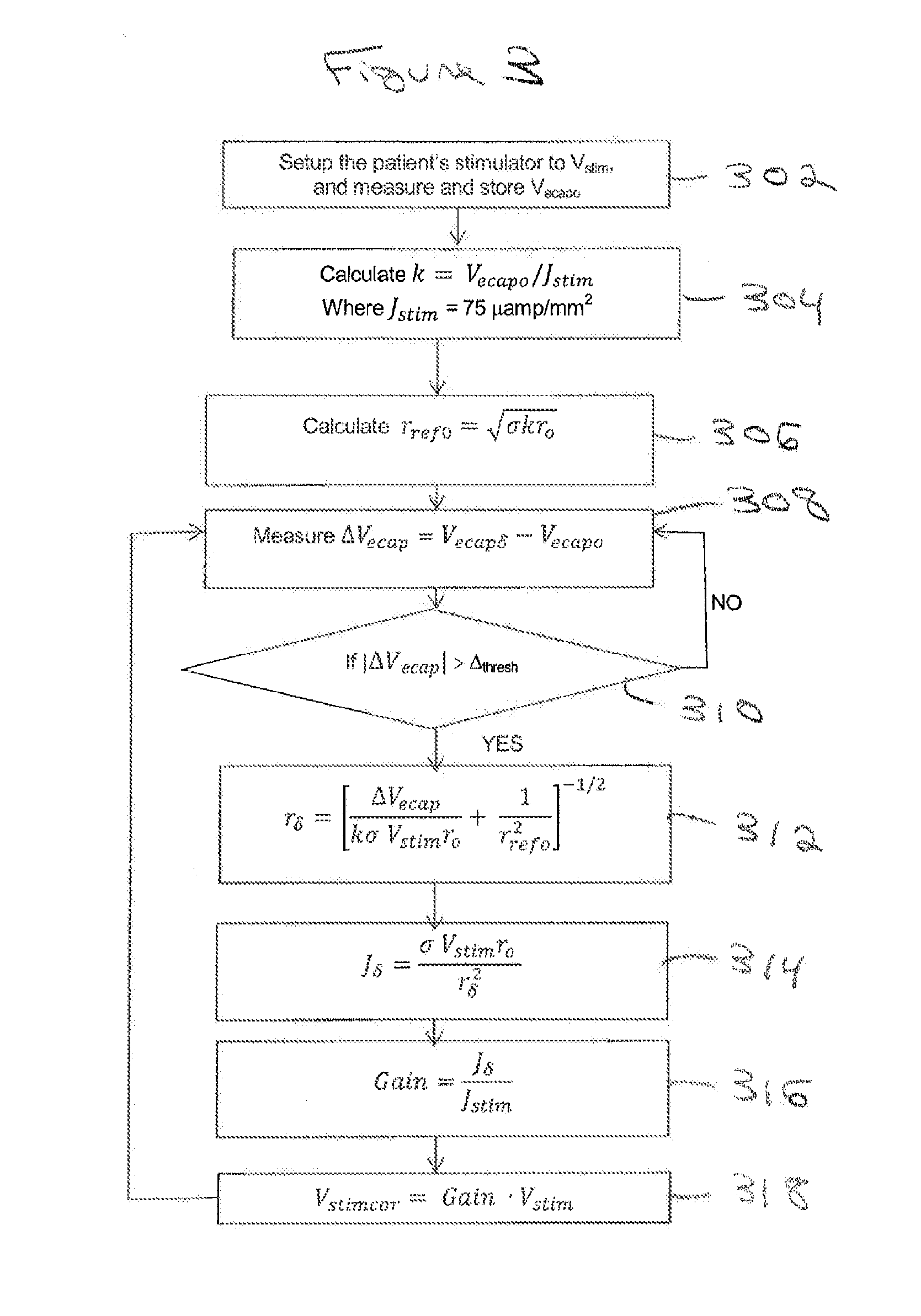Method and system for non-linear feedback control of spinal cord stimulation
a spinal cord and non-linear feedback technology, applied in the field of spinal cord stimulation, can solve the problems of increasing the likelihood of tissue damage, affecting the treatment effect, and affecting the effect of pain reduction therapy,
- Summary
- Abstract
- Description
- Claims
- Application Information
AI Technical Summary
Benefits of technology
Problems solved by technology
Method used
Image
Examples
Embodiment Construction
[0032]Embodiments herein provide an ECAP-based feedback process for automatically adjusting SCS therapy amplitude and / or pulse width in response to changes in lead position, and consequent alteration of the stimulation threshold. Embodiments herein describe a process that accounts for the relationships between the stimulation electrode-to-spinal cord distance and the sensing electrode-to-spinal cord distance. The process incorporates electrical impedance measurements to adjust stimulation in response to changes in the electrical impedance of surrounding body tissue or fluid in the spinal canal, which can cause shunting of stimulation current. Embodiments herein improve the safety and efficacy of SCS by compensating for changes in stimulation thresholds and reducing variability in paresthesia coverage and pain reduction as the patient moves between postures or the lead migrates from the implantation site.
[0033]FIG. 1 depicts a stimulation system 100 that generates electrical pulses f...
PUM
 Login to View More
Login to View More Abstract
Description
Claims
Application Information
 Login to View More
Login to View More - R&D
- Intellectual Property
- Life Sciences
- Materials
- Tech Scout
- Unparalleled Data Quality
- Higher Quality Content
- 60% Fewer Hallucinations
Browse by: Latest US Patents, China's latest patents, Technical Efficacy Thesaurus, Application Domain, Technology Topic, Popular Technical Reports.
© 2025 PatSnap. All rights reserved.Legal|Privacy policy|Modern Slavery Act Transparency Statement|Sitemap|About US| Contact US: help@patsnap.com



